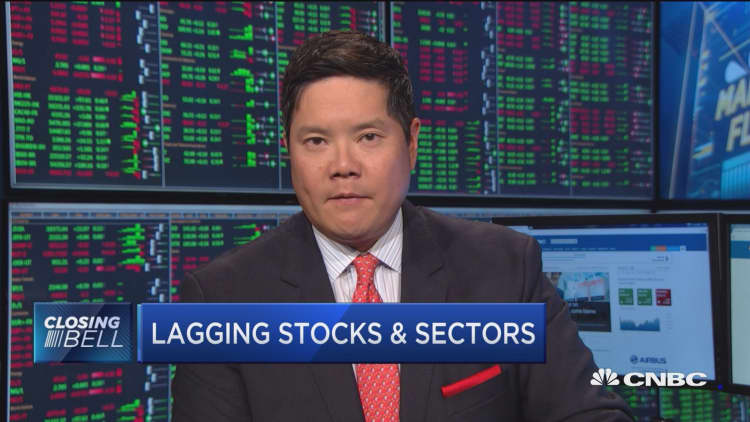Bank of America Merrill Lynch equity analysts are among the most bearish on Wall Street, and they say the S&P 500 could retest its February lows this summer — about 15 percent below current levels.
Savita Subramanian, head of U.S. equity and quantitative strategy at Bank of America Merrill Lynch Global Research, said on a conference call Wednesday that this summer, the could retest its February lows near 1,800. That's 16 percent below Wednesday's record close of 2,152.43.
She cited factors such as valuation, seasonal weakness and uncertainties around the upcoming U.S. presidential election and Europe.

"Another leg down in oil prices could drive the U.S. market down as well," she said.
While U.S. stocks trade near all-time highs, U.S. crude oil futures have fallen more than 13 percent from above $51 a barrel last month to settle below $45 on Wednesday.
Earlier this month, Goldman Sachs Chief U.S. Equity Strategist David Kostin told clients there is a downside risk of 5 to 10 percent in the short term due to geopolitical events. The firm has a year-end target of 2,100 for the S&P 500.
Subramanian kept her year-end target at 2,000 and her 10-year estimate at 3,500. BofAML slashed its forecast to 2,000 from 2,200 on February 12, a day after the so-called "Dimon bottom" when the index closed at 1,829.
With the S&P 500 expected to end this year about 43 points below its December 31, 2015 close, Subramanian recommends picking sectors. Her favorites are health care, telecom, real estate (which is set to become its own sector later this quarter) and tech. She's underweight financials (ex-real estate), consumer discretionary and materials.
During election years, "you want to own volatility," she said. The CBOE Volatility Index (.VIX) spikes above 24 on average in the month ahead of a presidential election, BofAML analysis showed.
Source: BofAML
Regardless of which candidate is elected, she expects fiscal stimulus, which should benefit more cyclical sectors. Separately, a win by presumptive Republican presidential candidate Donald Trump would likely result in a more hawkish Fed, benefiting sectors such as financials, she said.
"One overhang this time around, we have one candidate where the policy is more uncertain," she said, which puts a "cap on multiples for the S&P 500."
To be sure, another BofAML strategist didn't rule out a rise to 2,400 in the near term. Chief Equity Technical Strategist Stephen Suttmeier said it took the S&P more than 300 calendar days to make a new high, a relatively rare event that has historically tended to send the index even higher.
Subramanian did note the S&P's recent climb is supported partly by suppressed returns from Treasurys. She also pointed to secular growth potential for stocks from more stable spending in research and development, offsetting concerns about declining capital spending.
"On some levels, there is a big yield grab going on," she said. BofAML analysis showed nearly 60 percent of S&P 500 stocks have a dividend yield above the 10-year Treasury yield, which was around 1.47 percent midday Wednesday.
Source: BofAML


